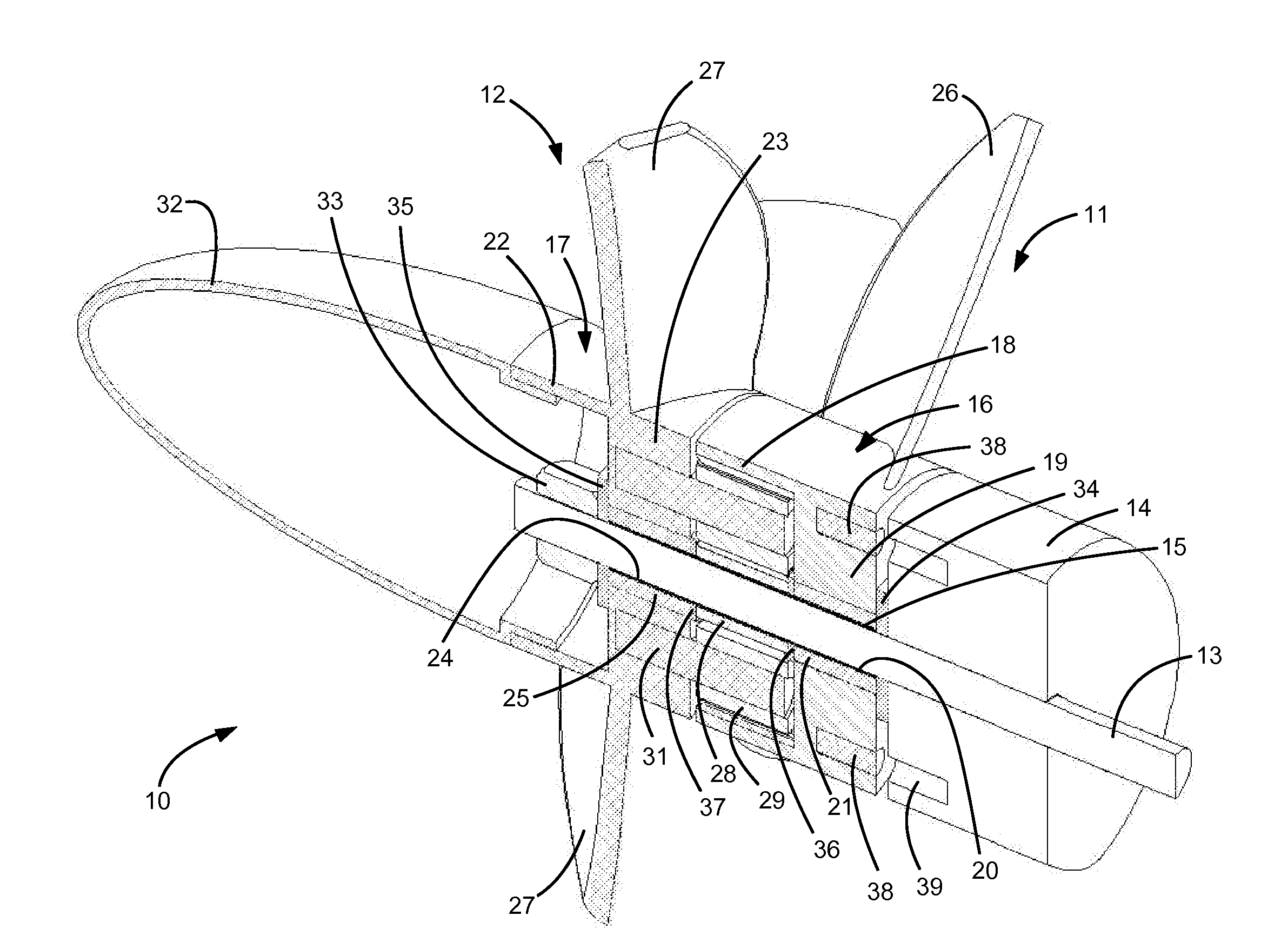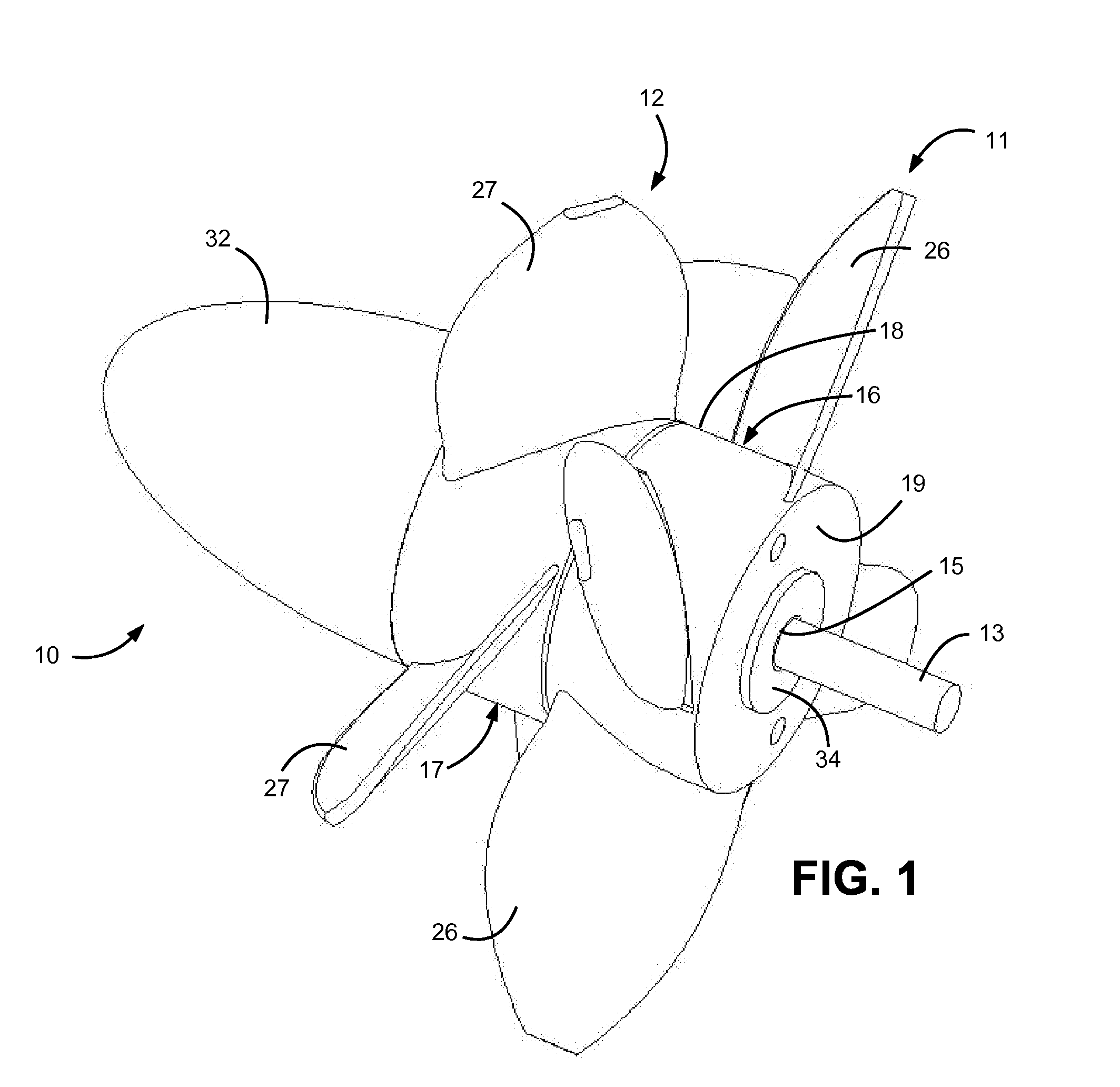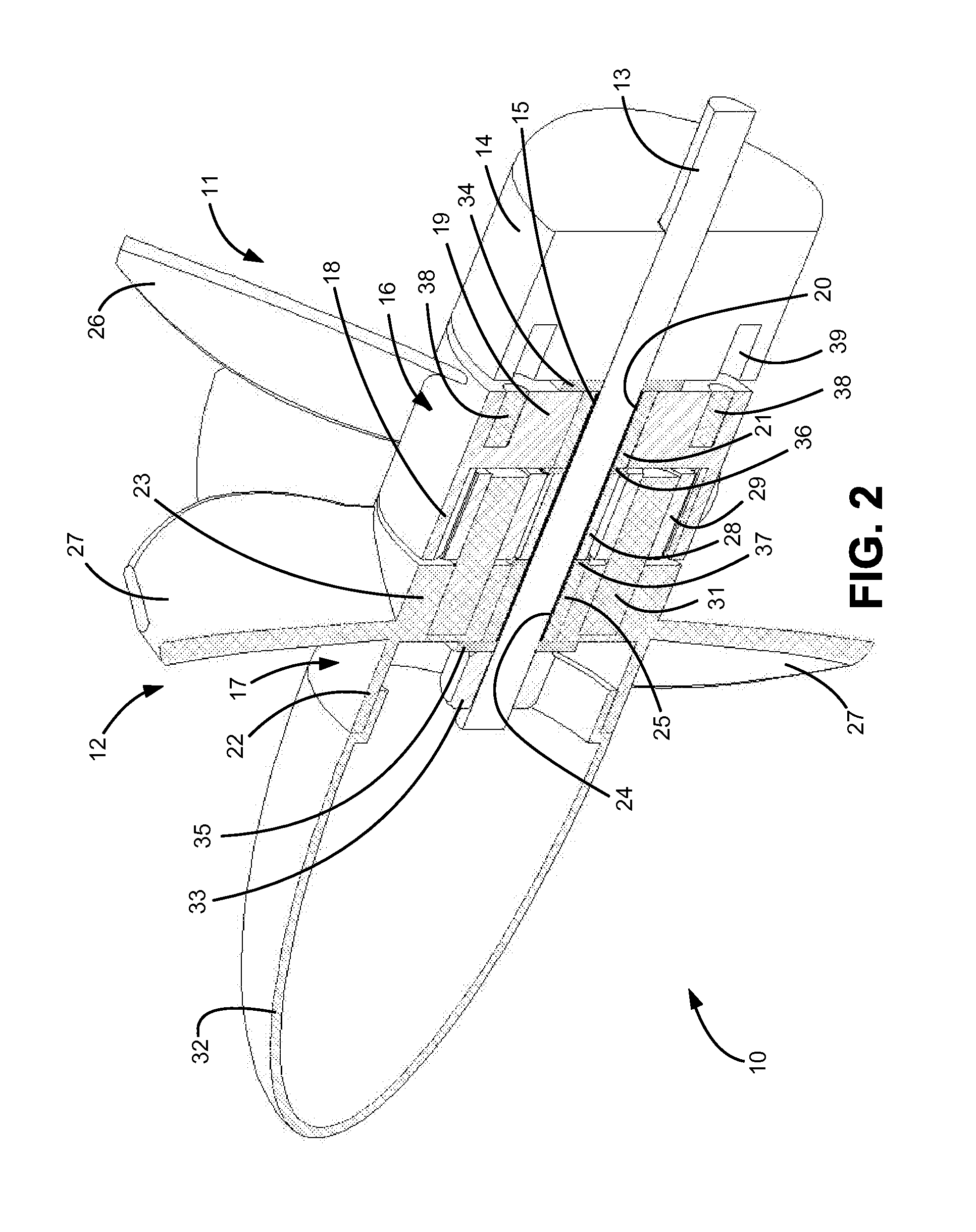Counter-Rotating Integrated Propeller Assembly
a propeller assembly and counter-rotating technology, applied in the field of marine propulsion systems, can solve the problems of high cost, complexity, weight and cost, and the need to purchase transmission and propulsion systems, and achieve the effect of optimizing the effect of upstream and downstream slipstream velocities, saving substantial cost and size, and reliable operation
- Summary
- Abstract
- Description
- Claims
- Application Information
AI Technical Summary
Benefits of technology
Problems solved by technology
Method used
Image
Examples
Embodiment Construction
[0025]Referring more particularly to the drawings, and initially to FIG. 1, there is shown a propeller assembly 10 according the present invention, comprising a first propeller set 11 and a second propeller set 12. The assembly 10 is mounted on the end of a drive shaft 13 (FIGS. 2 and 3) which extends from a marine vessel or motor housing 14. The drive shaft 13 which is connected to a suitable propulsion system such as an electric motor, may be hollow or solid. The drive shaft 13 extends through a hollow mounting tube 15 which is locked on the draft shaft and rotates with the drive shaft. The hollow mounting tube 15 is provided only as a convenience allowing the dual propeller system to be assembled prior to its installation on the drive shaft 13. It is also contemplated that the components of the assembly, including gearing, bearings, hubs and propellers, can be directly mounted to the drive shaft 13. Each of the propeller sets 11 and 12 has a hollow cylindrical hub 16 and 17, resp...
PUM
 Login to View More
Login to View More Abstract
Description
Claims
Application Information
 Login to View More
Login to View More - R&D
- Intellectual Property
- Life Sciences
- Materials
- Tech Scout
- Unparalleled Data Quality
- Higher Quality Content
- 60% Fewer Hallucinations
Browse by: Latest US Patents, China's latest patents, Technical Efficacy Thesaurus, Application Domain, Technology Topic, Popular Technical Reports.
© 2025 PatSnap. All rights reserved.Legal|Privacy policy|Modern Slavery Act Transparency Statement|Sitemap|About US| Contact US: help@patsnap.com



